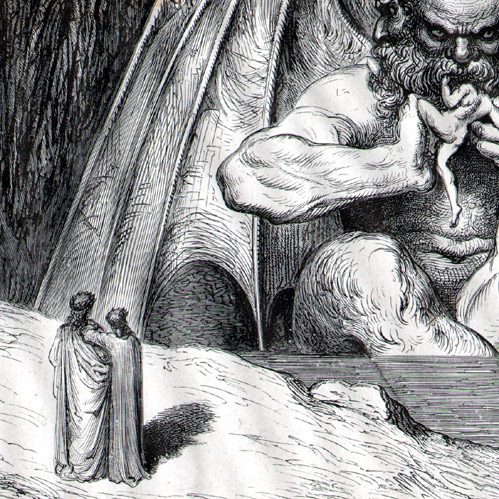“History doesn’t repeat itself but it often rhymes.”
– Mark Twain
It had been nearly two years. And it was bloody. Very, very bloody. In June, 1941 the National Socialist (Nazi) state of Germany sat on top of the world. Emerging from the humiliating ashes of World War I and the economic devastation of the Great Depression, Adolf Hitler and his Nazi Party saw themselves transformed from a fringe party to the most powerful ideological and military force in the world. Before the war began in September, 1939, the Rhineland, Austria and Czechoslovakia fell bloodlessly thanks to bullying hysterics by Hitler and passive enabling by the world powers. Next, almost inconceivably, the Nazis struck a last minute (and quite cynical) alliance with their hated enemy, Communist Soviet Union. And then all hell would break loose. Within ten months, Poland, Denmark, Norway, Belgium, Netherlands, Luxembourg, and France would fall. One year further, Yugoslavia and Greece would be be subjugated as well. And now, the Soviet Union.
Having broken countless promises already, Hitler found no difficulty betraying the Communists who so recently afforded him free reign across Europe . The Nazi-Soviet pact provided Hitler the ability to attack the West without fearing a Soviet attack on his flank. Now, in June 1941 with nearly all of Europe but Britain dominated, Hitler was poised to invade the Soviet Union.
Now rather than recapitulate what is still considered the most massive invasion (in manpower, materiel, and front size) the world has ever seen, I wanted to draw attention to a curious and horrific detail. From the beginning of Adolf Hitler’s accession to the role of Fuhrer, he and his paramilitary (first the brownshirted “SA” and later the blackshirted “SS”) were at odds with the existing combined German military (the Wehrmacht). Many in the military saw Hitler as a screeching ruffian surrounded by drunk, brawling “toughs”. Trying to avoid full-blown violent conflict between these two entities was a constant balancing act Hitler was trying to manage. When Poland was invaded and the SS perpetrated some rather heinous acts on civilians, there were elements of the German Army who were taken aback. Hitler’s answer was to wrest administrative control of Poland from the Army and place it into the ruthless hands of the SS, ostensibly so that the Army could rest and rebuild for the next military campaign. But the story doesn’t end there. Operation Barbarossa, the invasion of Soviet Union, was being planned in earnest. And yet, the planning and training wasn’t just tactical, but ideological. Messages were given to the Army and the SS that this was a racial and political war against degenerate Jews and filthy Communists. Given the beasts the Nazis felt they would encounter, they were freed from even the least humane standards and encouraged (if not required) to execute Jews, Slavs, Gypsies and Communists. As Hitler would command,
“The war against Russia will be such that it cannot be conducted in a knightly fashion. This struggle is one of ideologies & racial differences & will have to be conducted with unprecedented, unmerciful, & unrelenting harshness.”
“We are writing history anew: from a racial standpoint.”
With plans that originated in his 1925 polemic Mein Kampf (“My Struggle”), Hitler intended to exterminate or enslave the “defective” races and competing ideologies (especially Communism) and turn the Soviet Union into a eugenically-planned Nazi paradise. But first, the devil’s work would have to be done.
On June 22, 1941 at 3:30 am, the invasion would begin. The Army would lead and within weeks drive dizzingly deep into Soviet territory. While front line fighting would determine the status of the war, the butchery behind the lines would determine the status of the imminent Nazi utopia. The lines had been blurred between the strategic fighting of the Army and the ideological fighting of Nazi forces coming in behind the advancing front lines. But Hitler, SS Chief Heinrich Himmler and Reich Main Security Office Director Reinhard Heydrich wanted there to be no mistake about the extermination to be done as the front line advanced, so Heydrich established the four Einsatzgruppen (“task forces”) comprised of 600-1000 men with the following charge (as described by historian Ian Kershaw),
“[Heydrich] addressed the [Einsatzgruppen] on a number of occasions…He mentioned that Jewry was the source of Bolshevism in the East and had to be eradicated in accordance with the Fuhrer’s aims. And he told them that Communist functionaries and activists, Jews, Gypsies, saboteurs and agents endangered the security of the troops and were to be executed forthwith. By June 22 the genocidal whirlwind was ready to blow.”
And so the horrors would ensue.
The Nazi war apparatus and its machinery of genocide began as a small, fledgling movement which picked up followers, financing, weapons and territory. For a time, Hitler’s opponents dismissed and underestimated him. Soon, however, they were bargaining with and appeasing him. And finally they were dominated and enslaved by him. Until someone stood up to him. Fully aware of the financial costs, political price and human loss that would come with resistance, those who resisted found there was no choice. The barbarism of tortured slavery was no alternative. Someone stood up to him. And won.
Thank God this is history.
Because wouldn’t it be terrible if a vicious ideological movement were moving across great swaths of land with lightning speed (blitzkrieg, if you will) consuming city after city, brutally expropriating people of their belongings, vaporizing their culture, torturing, raping and killing them with a nearly unparalleled gleeful sadism? Wouldn’t it be horrible if children and elders died of thirst after days in the wilderness shaking with fear that soon they might be murdered for their faith or ethnicity? Wouldn’t it be devastating to see symbols adorning homes and businesses systematically designating them to be targeted for terror and mayhem? Wouldn’t it be frightening if this movement were growing in followers, financing, weaponry and territory? And what if nobody but the tragic and vulnerable victims stood up to them?
Perhaps that would be the most horrible thing of all.
Never again? These two words are declared again and again to commemorate genocide and atrocities. In somber graveyards, stark museums and ornate banquet halls, spines are stiffened, fists are tightened and jaws are clenched. “This should never have happened”, we say. “This should never happen again”, we insist. Never again. It is a great sentiment.
Indeed.
But actions speak louder than words.
















